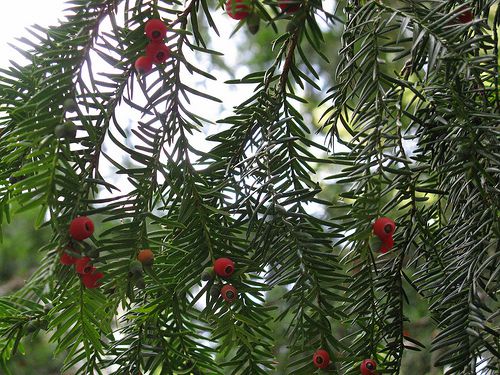-
 Pedicellariae
Pedicellariae
-
 Viscoelasticity
Viscoelasticity
-
 Nosocomial
Nosocomial
-
 Constellation of Andromeda
Constellation of Andromeda
-
 Artificial heart
Artificial heart
-
 Blue Car
Blue Car
-
 Tamiflu
Tamiflu
-
 Tritium breeding blanket
Tritium breeding blanket
-
 P80
P80
-
 Thermocline
Thermocline
-
 Main cryogenic stage
Main cryogenic stage
-
 Refractive index
Refractive index
-
 Unbounded universe
Unbounded universe
-
 Monoethanolamine
Monoethanolamine
-
 The Nile
The Nile
-
 Bio-accumulation
Bio-accumulation
-
 Guttation
Guttation
-
 Encephalins
Encephalins
-
 Antivenom
Antivenom
-
 D meson
D meson
-
 Air pollutant concentrations
Air pollutant concentrations
-
 MIDI
MIDI
-
 Phoneme
Phoneme
-
 Diarrhoea
Diarrhoea
-
 Intrusion prevention system
Intrusion prevention system
-
 AMAP
AMAP
-
 Delirium
Delirium
-
 Locus coeruleus
Locus coeruleus
-
 M67
M67
-
 Septicaemia
Septicaemia
Yew
The yew is a tree that can reach heights of between 8 and 10 m, with some specimens growing up to 15 m. Some specimens of this species in Normandy and Great Britain are over 2,000 years old!

The yew, from the Taxaceae family. © The justified sinner, Flickr CC by nc-sa 2.0
Names
The yew (Taxus baccata) is a member of the Taxaceae family. It is often considered to be a resinous tree, although in fact it is a rare non-resinous gymnosperm. It differs from conifers by the fact that its fruit is not a cone.
Botanical description of the yew
Very stocky in appearance, this tree has a short trunk divided into large branches located very close to its base. Its structure is rounded. Its bark forms large brown-mauve or red plates. Its persistent leaves are flat, dark green needles. This is a dioecious species, with yellowish male flowers that are tiny round catkins.Its female flowers are greenish and look like buds in the spring. In the autumn its fruit, called an aril, is bright red and encloses a single, highly toxic seed.

Taxus baccata. © Bambo, Flickr CC by nc-sa 2.0
Origins
The yew has always been widespread throughout Europe, North Africa and the Middle East.
Growing conditions of the yew
This species grows very slowly. It prefers shady locations in the humid forests of the low mountains and plains. The yew prefers humus rich soils but can also grow in calcareous land.
Use
The wood of this tree is brown-red, veined and flexible. It was used to make bows in the past. The yew is mainly used as an ornamental tree, and, much like the box tree, is particularly used because it easy to cut into beautiful topiaries.
Author: Michel Caron
 A yew. © Jamie Richmond, Flickr CC by 2.0
A yew. © Jamie Richmond, Flickr CC by 2.0
Latest
Fill out my online form.



